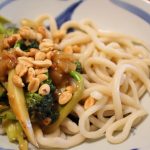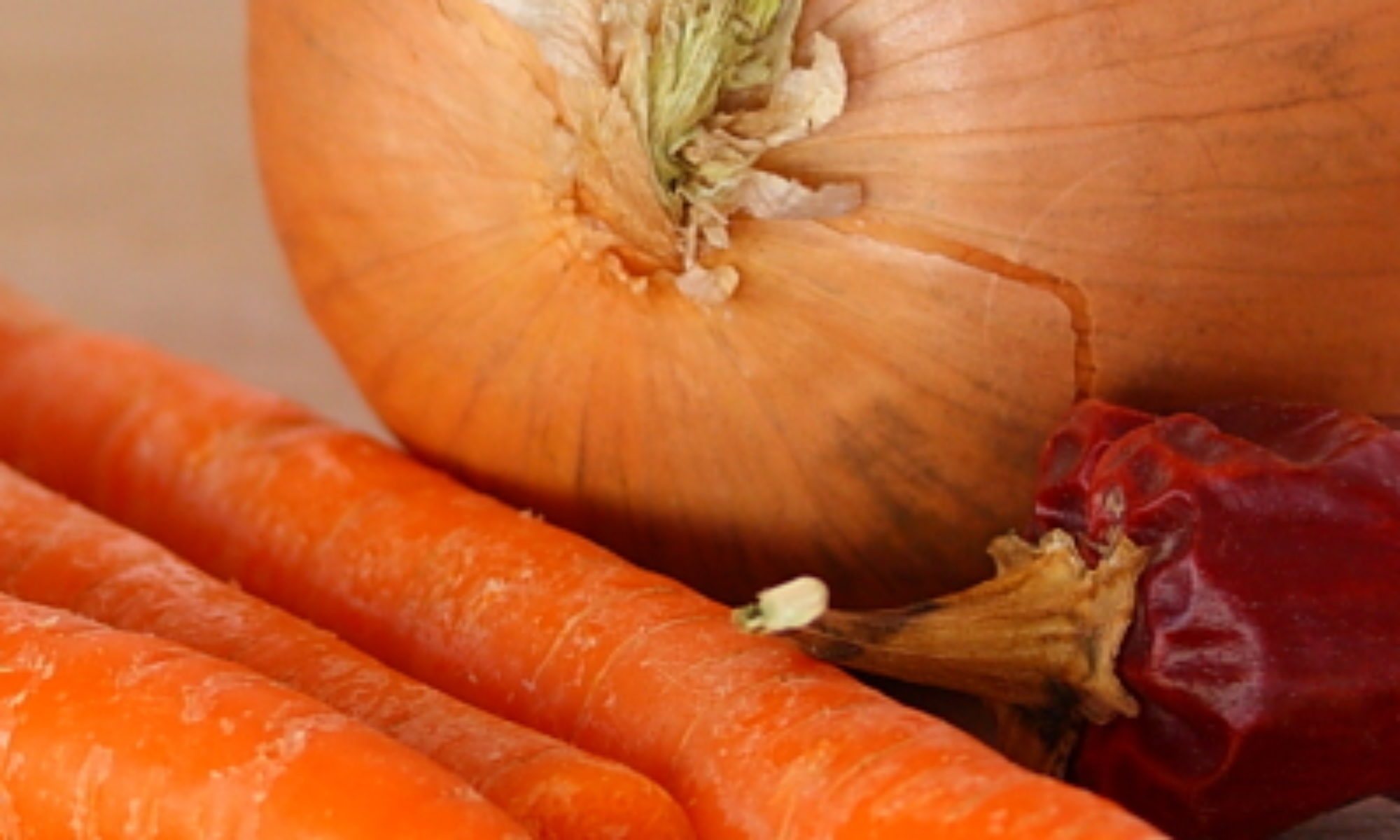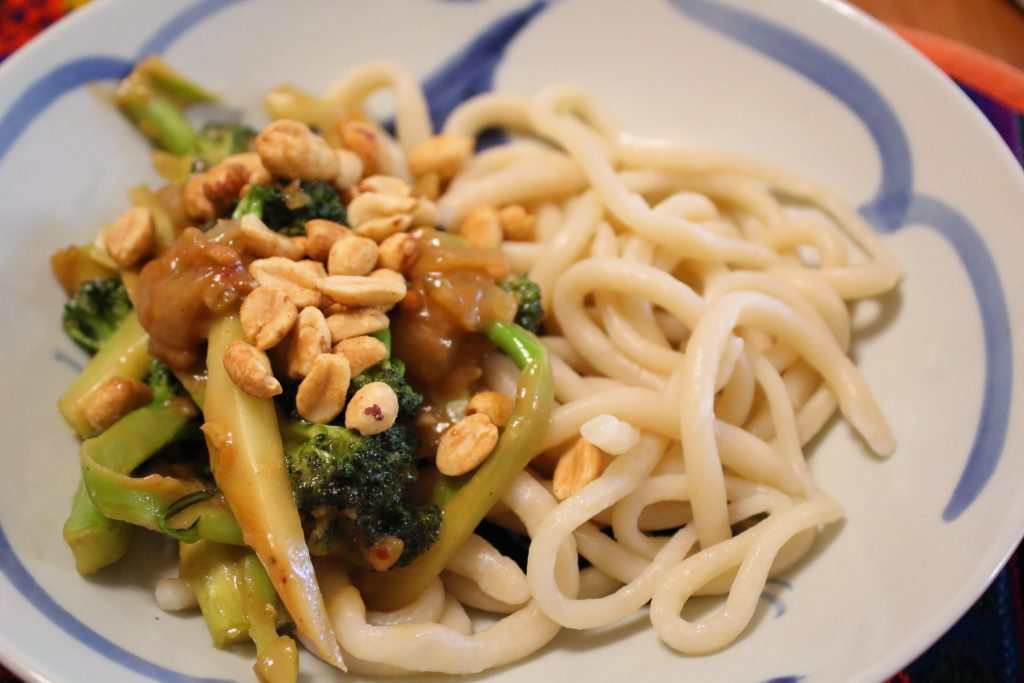
Earlier this year, we happened to stop for lunch in a popular noodle shop near the University of Washington in Seattle. We had the simple udon noodle soup, which made for a nice, filling meal that gave us the energy to walk back to our B&B over in the Capital Hill area (for those who don’t know Seattle, that’s about 3 miles, not super far). And, over the months, we thought off and on about buying some fresh udon noodles at the local Asian supermarket, but we never could decide which ones. There are literally dozens of brands/styles/types; we felt overwhelmed, and wished there were something like a sign indicating which noodle would be for people who don’t know anything about Asian-style noodles. So, we just went without. At least, until now.
As with Italian-style pasta, we figured that it might be pretty simple to make up a batch of udon noodles. After all, people have been making noodles for, oh, probably a thousand years at least, so, how difficult can it be? Well, it turns out that making hand-rolled udon noodles is super simple. An easy, supple dough that rolls out quickly, so you can have fresh udon on the dinner table tonight.
Now, we found a recipe over at Steamy Kitchen, but the amount it made was way too much, enough for about eight servings; plus, it had those vague instructions for the amount of water to use, you know, the 1 1/2 to 1 3/4 cups of water depending on the feel of the dough. If you’ve never made udon noodles, you have no idea about the feel, so we made ours exact, right down to the gram, which also gives you the ability to scale your recipe up or down to make as many servings as you need.
Handmade Udon Noodles
Ingredients
- 150 g all-purpose flour (heaping 1 cup)
- 6 g kosher salt (1 tsp)
- 90 g water (1/3 cup + 2 tsp)
Instructions
- Stir together flour and salt in a medium bowl.
- Add water and stir to form a soft dough.
- Turn dough onto a clean work surface and knead for 5 minutes or until smooth.
- Wrap in plastic and let rest for 30 minutes.
- Cut off pieces of dough and use your hands to roll into long noodles about 1/8 inch in diameter. Transfer to a towel-covered drying rack.
- To cook, bring a large kettle of water to a full boil. Add noodles and cook until soft, about 7 minutes. Drain, and, if desired, rinse away excess starch.
Ingredient discussion:
Three ingredients: flour, salt, and water. What could be simpler? We really recommend using a scale to measure, at least the flour and water, because then your noodles will be perfect every time. We do, as it saves us from too dry dough one time, too sticky dough the next – why go through that if you don’t have to?
Procedure in detail:
Mix dry ingredients. In a medium bowl, stir together salt and flour. We like to use just an index finger to mix; it just seems more authentic. Of course, you can use a spoon if you want, but we don’t.

Add water. Pour in the water, and, once again, use your index finger to start combining. Some of the dough will stick to your finger, but that can be rubbed off later. Keep mixing until most of the flour has been moistened and incorporated, then turn out the dough onto a clean work surface.

Knead. Take the dough and start kneading; basically, push the dough down with the heel of your hand, fold over, and press down again. Keep this up until the dough is smooth and elastic, about 5 minutes. With the proper amount of water in the dough, it should be easy to knead and it shouldn’t stick to the surface or your hands. That’s why we measure carefully and accurately.

Let rest. Wrap the dough in a layer of plastic and let rest for 30 minutes. Or longer; the exact amount of time doesn’t matter. Just let it rest and relax, so it’ll be easier to shape.

Shape. Cut off a small piece of dough and roll it out into a long noodle about 1/8 inch in diameter. Yep, just place the piece on your work surface and roll with the palms of your hands, just the way you used to do with modeling clay as a child. Once you’ve rolled out a noodle, place it on a towel-covered drying rack, grab another piece of dough, and repeat. In a few minutes, you’ll have a bunch of noodles ready to be boiled.

Boil. Bring a large kettle of water (no need to add salt, these noodles have plenty) to a full rolling boil. Add the noodles and adjust the heat to keep the water boiling but not boiling over. Cook the noodles until they’re soft, but not mushy. Drain, rinse with water if desired, and serve however you serve udon noodles. We used ours with a peanut broccoli stir-fry.
These are just like the udon noodles we remember. Slightly springy and stretchy, nice and tasty, and they absorb some sauce nicely. We really liked the fact that we shaped these by rolling them by hand. The original recipe suggested rolling them out with a rolling pin, folding and slicing the dough (like hand-made fettuccine), but we think this is better. Plus, you can make these anywhere; only a bowl is required. And, this recipe is so easy, we no longer have to worry about buying the right udon noodles; we can just whip up a batch on a moment’s notice. Five stars.




I can’t wait to make these. I love making my own pastry. I envy your travelling (although sad times at present). I haven’t quirky friends to travel with but know who I want to cook up an Italian storm with as soon as I have the chance.
Enjoy your isolation. Best wishes .. Sal.
Thanks so much for your kind comments, it is really appreciated. And feel free to let us know how your udon noodles turned out.
All the best,
Shawn